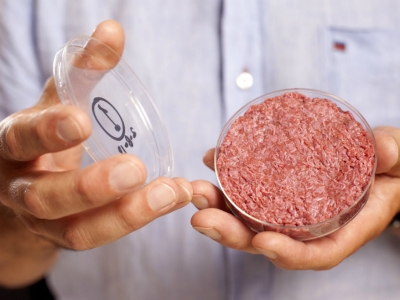Today’s generation Z is bringing changes to the food industry, trying to instill “new tastes” in citizens.
Companies using microorganisms convert carbon dioxide into protein and get meat with the taste and texture of the real, which is theoretically can be a solution to the food crisis, as well as reduce air pollution. Other virtuosos make cloth from milk waste, and still others make ink from exhaust gases.
And the above is not about fantastical scenarios, but about what is already happening abroad and is projected to expand in the coming years, driven by new consumer trends predominantly of the younger generation, seeking a return to nature in combination with (not in opposition to) new technologies. .
What are the characteristics of new trends? According to an article in Kathimerini, natural ingredients are being used much more widely, and a “closed-loop” technique is being used. The biggest innovation so far in Silicon Valley is Air Protein, as is the startup of the same name, which cooks meat by converting carbon dioxide emitted by industries into protein.
In special bioreactors, with the help of microorganisms, carbon dioxide is converted into protein, which then takes the form of a powder and can be used to make meat or even yogurt.
Restaurants in Germany prepare food from leftovers (leftovers). In other countries instead of packaging fresh vegetables and fruits use special ink so that, for example, potatoes can be stamped with the country of origin and other necessary data. But polyethylene is used much less! Soup mixtures are offered to be packaged in gelatin, which is also one of the ingredients of the product and then dissolves during cooking.
Crafts (handmade) have also come into vogue and become the dominant trend as it is considered to be “sustainable” compared to industrial production. Crafts (children’s toys, souvenirs, sewn by themselves from old clothes, etc.) are no longer sold at flea markets, but through electronic stores using applications. Thus, as Generation Z convinces us, the “old with the new” unites.
The Finnish company Solar Foods was born out of research carried out by VTT Technical Research Center of Finland and LUT University. At the beginning of the research, when trying to create synthetic oil, research participants noticed that the residues formed by microorganisms during the process of creating oil are edible and high in protein. Bacteria are “fed” with carbon dioxide and nutrients: nitrogen, calcium, phosphorus and potassium. They multiply and ferment like yeast in bread baking or brewing. Next, the microorganisms dry out and turn into powder.
“The powder has no taste, which is good,” says Pasi Vainikka, CEO of Solar Foods. “For example, pea protein tastes terrible and is used in some meat substitute products. Companies that use pea protein in their products are forced to mask this taste in costly manufacturing processes. We don’t need it.”
Solar Foods estimates that 25% of global greenhouse gas emissions are related to food production, including agriculture and food processing. According to Vainikk, this means that even if the world switches completely to renewable energy sources, humanity will still have to take measures to reduce emissions associated with food production.
Protein powder created by Solar Foods, called solein. Solein can be added as an ingredient to foods already on the market, such as drinks, cereals, or pasta. It can also be used in increasingly popular natural meat and milk substitute products. And it can be used in the diet of astronauts during long flights.
“It takes 25 to 30 kilowatt-hours of renewable electricity and two kilograms of CO2 to produce one kilogram of solein,” Vainikka says. – This natural substance is approximately 65% protein, 25% carbohydrates and dietary fiber, and 10% fat. Solein can replace the nutrients that people get by eating animal meat. As we expand our operations, the price of solein will decrease and should be lower than that of animal proteins.”
Solein production requires only a tiny fraction of the area used by greenhouses and farms in the production of their products. The prototype of the previous solein production system was placed in a shipping container and could produce one kilogram of protein product per day.
Solein does not require fertilizers to produce and only requires a small amount of water, which is then reused in the production cycle. If we take into account the ratio of protein produced to the resources consumed by production, then solein successfully prevails over options such as, for example, soy powder. And if at the same time saltine further reduces the need for agricultural land, then it can even become a carbon-negative product. Taking into account resource costs, Solar Foods claims that solein production has ten times better emission rates than growing plants and 100 times better than meat production.
At the time of this writing, Solar Foods has received around €35 million in government funding. The company is ramping up production and plans to launch Solein in grocery stores in some of its leading markets in early 2022. On the shelves of the European Union, where food regulation and accreditation takes longer than in some other countries, solein may be seen in 2023.
“We don’t have any expectations right now that consumers will change,” Vainikka says. – New products will be almost the same as you see them today. But consumer tastes will change with each new generation. Perhaps our grandchildren will eat lab-grown meat. And maybe they will be shocked when they find out that our generation had to kill animals to get meat.”







More Stories
4 scenarios for the development of the war in Ukraine
There was a scandal in Cyprus over the Prime Minister's plane, donated by K. Mitsotakis
Nuclear wrestling between the USA and Russia: are we heading towards the use of strategic weapons?